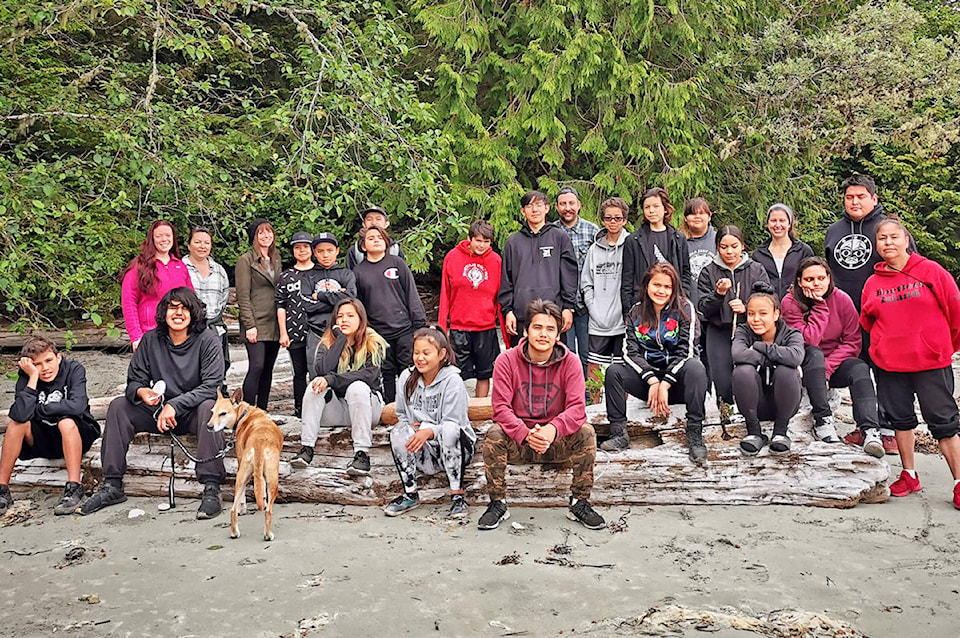MARCIE CALLEWAERT
Special to the Westerly
Ahousaht and Klemtu First Nations are working to broaden and strengthen the cultural experiences of their youth by participating in a culture exchange between their Grade 8 classes.
Ahousaht students and staff travelled to Klemtu, on the central B.C. coast, in early May.
Justin Magnuson, who is mixed blood Cree from Kawacatoose Cree Nation in Saskatchewan, is the principal and education director at Kitasoo Community School (KCS) in Klemtu. Magnuson and Kate Drexler, the principal of Maaqtusiis Secondary School (MSS) in Ahousaht, met in September and developed the idea to connect the youth from their two remote communities.
In Klemtu the KCS students hosted a Potlatch and MSS students were able to see how preparations were made and the protocols for a feast event in their Nation. They also went camping and harvested traditional seafoods. These land-based experiential learning opportunities are a chance for “Euro-centric and Indigenous [education] systems to converge,” Magnuson explained.
On May 26, the same students from Klemtu arrived in Tofino where, Drexler says, they were “proudly greeted” at the dock by the Ahousaht class and taken to Cedar Coast Field Station on Vargas Island for a two-night stay. The group hiked to Ahous Bay on the West side of Vargas Island. Along the way, trip leaders talked about medicinal plants, the history of the area and wildlife on the island. The Ahousaht students taught their visitors how to play stealing sticks, a traditional beach game.
Staff from Cedar Coast Field Station also led the group in a marine micro plastic survey. Results are being gathered from multiple sites by the Ucluelet Aquarium. Connections between plastic pollution in the oceans and health of traditional food sources were discussed by the classes to tie into the cultural exchange theme.
For the past three years, Ahousaht has hosted a school feast and potlatch in late May. It is part of the cultural curriculum and students of all ages are involved in the planning, preparations and performances. The students from Klemtu were one of eight schools that attended the event this year. Each visiting school performed a collection of songs and dances from their Nation. Drexler explained that “there is a sense of solidarity when you find people who value what you value.” The cultural exchange and feast were a celebration of those values.
Some of the highlights of the MSS feast this year included: the daycare students performing the Warrior Dance, Kindergarten students performing the Wolfpack Dance and the high school Hahts-hoolth-tla Dance. During the Hahts-hoolth-tla, also called the Hinkeets, the final dancer on the floor was joined by his father, one of the drummers, for a touching finale. Aaron Keitlah, who comes from the Kitlamuxin Family in Ahousaht, is the language and culture programs teacher at MSS, and explained that the school feast is an “opportunity to guide our teaching in language and culture, as well as all curricular areas, in an authentic and meaningful way.”
Tying lessons into a real-world scenario creates a more significant and community-based classroom setting. Keitlah attended both the Klemtu and Ahousaht events for the cultural exchange. He reflected that it was “an honour to have [the visiting schools] choose to spend their time with us here in Ahousaht” during the school feast.
READ MORE: New principals for Maaqtusiis schools
READ MORE:Aboriginal tourism growing in Ahousaht
READ MORE: Ahousaht Fire Department always at the ready
